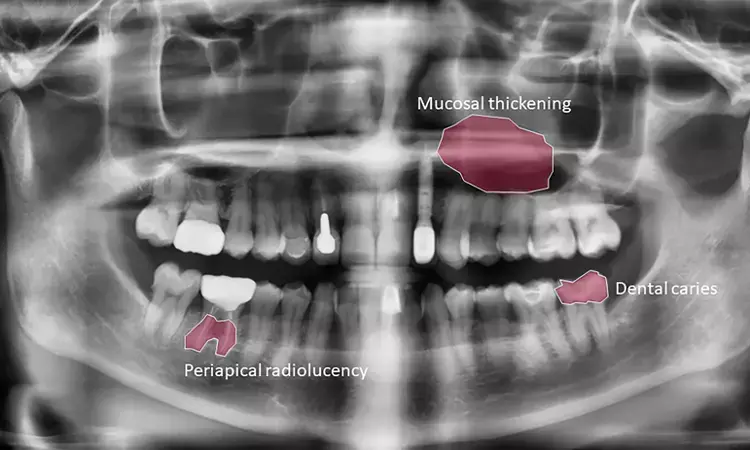- Home
- Medical news & Guidelines
- Anesthesiology
- Cardiology and CTVS
- Critical Care
- Dentistry
- Dermatology
- Diabetes and Endocrinology
- ENT
- Gastroenterology
- Medicine
- Nephrology
- Neurology
- Obstretics-Gynaecology
- Oncology
- Ophthalmology
- Orthopaedics
- Pediatrics-Neonatology
- Psychiatry
- Pulmonology
- Radiology
- Surgery
- Urology
- Laboratory Medicine
- Diet
- Nursing
- Paramedical
- Physiotherapy
- Health news
- Fact Check
- Bone Health Fact Check
- Brain Health Fact Check
- Cancer Related Fact Check
- Child Care Fact Check
- Dental and oral health fact check
- Diabetes and metabolic health fact check
- Diet and Nutrition Fact Check
- Eye and ENT Care Fact Check
- Fitness fact check
- Gut health fact check
- Heart health fact check
- Kidney health fact check
- Medical education fact check
- Men's health fact check
- Respiratory fact check
- Skin and hair care fact check
- Vaccine and Immunization fact check
- Women's health fact check
- AYUSH
- State News
- Andaman and Nicobar Islands
- Andhra Pradesh
- Arunachal Pradesh
- Assam
- Bihar
- Chandigarh
- Chattisgarh
- Dadra and Nagar Haveli
- Daman and Diu
- Delhi
- Goa
- Gujarat
- Haryana
- Himachal Pradesh
- Jammu & Kashmir
- Jharkhand
- Karnataka
- Kerala
- Ladakh
- Lakshadweep
- Madhya Pradesh
- Maharashtra
- Manipur
- Meghalaya
- Mizoram
- Nagaland
- Odisha
- Puducherry
- Punjab
- Rajasthan
- Sikkim
- Tamil Nadu
- Telangana
- Tripura
- Uttar Pradesh
- Uttrakhand
- West Bengal
- Medical Education
- Industry
AI enabled panoramic radiographs improve dental diagnostics and identify precise dental anamoly

Automatic segmentation of teeth is crucial for diagnosing tooth structures, damages, and proposing the best dental treatments. Panoramic radiographs use ionizing radiation with a limited dose to capture a large area of the maxilla and mandible in a single projection.
Artificial intelligence enabled panoramic radiographs improve dental diagnostics and identify precise dental anamoly suggests a new study published in the Journal of Dentistry.
This research focuses on performing teeth segmentation with panoramic radiograph images using a denoised encoder-based residual U-Net model, which enhances segmentation techniques and has the capacity to adapt to predictions with different and new data in the dataset, making the proposed model more robust and assisting in the accurate identification of damages in individual teeth.
The effective segmentation starts with pre-processing the Tufts dataset to resize images to avoid computational complexities. Subsequently, the prediction of the defect in teeth is performed with the denoised encoder block in the residual U-Net model, in which a modified identity block is provided in the encoder section for finer segmentation on specific regions in images, and features are identified optimally. The denoised block aids in handling noisy ground truth images effectively.
Results
Proposed module achieved greater values of mean dice and mean IoU with 98.90075 and 98.74147. Proposed AI enabled model permitted a precise approach to segment the teeth on Tuffs dental dataset in spite of the existence of densed dental filling and the kind of tooth.
The proposed model is pivotal for improved dental diagnostics, offering precise identification of dental anomalies. This could revolutionize clinical dental settings by facilitating more accurate treatments and safer examination processes with lower radiation exposure, thus enhancing overall patient care.
Reference:
Sultan A. Almalki, Shtwai Alsubai, Abdullah Alqahtani, Adel A. Alenazi,
Denoised encoder-based residual U-net for precise teeth image segmentation and damage prediction on panoramic radiographs, Journal of Dentistry, Volume 137, 2023, 104651,
ISSN 0300-5712, https://doi.org/10.1016/j.jdent.2023.104651
Keywords:
AI enabled, panoramic, radiographs, improve, dental, diagnostics, identify, precise, dental anamoly, Journal of Dentistry,Tooth segmentation; Damage prediction; Dental imaging; Panoramic radiographs; Residual U-Net; Hausdorff distance; Machine learning in dentistry
Dr. Shravani Dali has completed her BDS from Pravara institute of medical sciences, loni. Following which she extensively worked in the healthcare sector for 2+ years. She has been actively involved in writing blogs in field of health and wellness. Currently she is pursuing her Masters of public health-health administration from Tata institute of social sciences. She can be contacted at editorial@medicaldialogues.in.
Dr Kamal Kant Kohli-MBBS, DTCD- a chest specialist with more than 30 years of practice and a flair for writing clinical articles, Dr Kamal Kant Kohli joined Medical Dialogues as a Chief Editor of Medical News. Besides writing articles, as an editor, he proofreads and verifies all the medical content published on Medical Dialogues including those coming from journals, studies,medical conferences,guidelines etc. Email: drkohli@medicaldialogues.in. Contact no. 011-43720751


